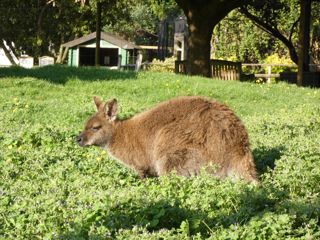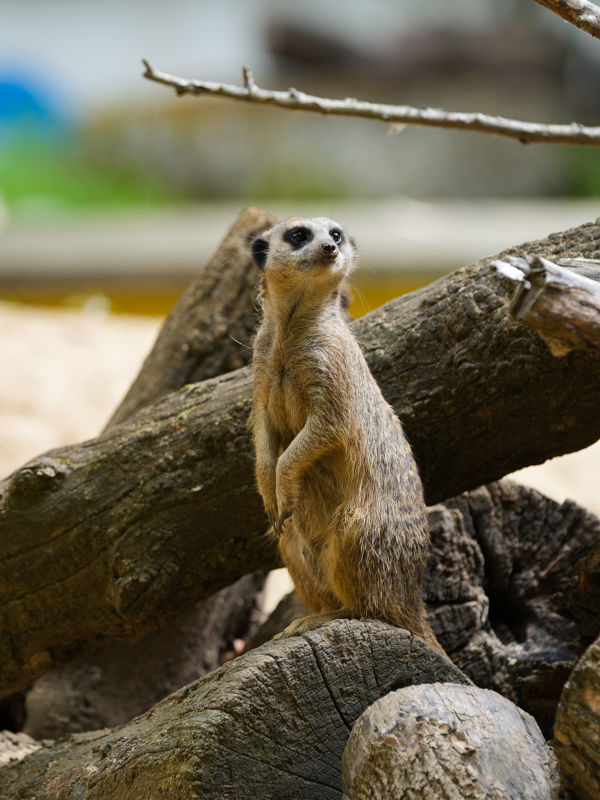
Red-Necked Wallaby

General Information
A group of wallabies is called a ‘mob’ but this species is mainly solitary, often coming together to feed in the late afternoon into the evening. A young wallaby or joey lives in its mother’s pouch for up to nine months but will continue to feed from her for another six months. A male wallaby is called a buck, boomer or jack. A female wallaby is called a doe, flyer or jill.

Latin name - Macropus rufogriseus
Class - Mammalia
Order - Diprotodontia
Family - Macropodidea
IUCN Status - Least concern
Habitat - road range of habitats including eucalyptus forests, tall coastal heathlands and pasturelands
Distribution - Endemic to Australia - through the south eastern parts and Tasmania
Fun Fact
Wallaby mothers can have a baby developing in the womb, a newborn in the pouch suckling milk and an older joey, out of the pouch, who still feeds from her (until weaning at around 18 months old) – all at once!
Our residents
Our mob of wallabies consists of three males: Marmaduke, Moorundie and Mylor. These three are very friendly and love attention from their keepers! Our wallabies love nothing more than a rainy day to wash their fur and eat the moist grass!

Sign up to our newsletter
Join our mailing list in order to keep up to date with Zoo news and special offers.






